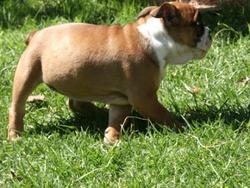 |
|
The cooler months ahead are a good time to sort out just what works and what doesn't in your garden. If you are part of one of the 2.8 million households that shares your life with a dog, you might be surprised to learn that some of our most popular plants are a danger to dogs.
"Most gardeners are aware that oleanders are poisonous to dogs but many common garden plants present risks to your four-legged friends and should either be avoided altogether or planted in areas that your dog cannot access," says Susie Chaseling from
the Petcare Information and Advisory Service.
"Common plants such as daphne, asparagus fern, aloe vera, jasmine, chrysanthemums, azaleas and rhododendrons, most bulbs and even sweet peas and daffodil bulbs are dangerous to dogs."
"Other plants such as wandering jew, cactus and nettles present the same risk to dogs as they do to humans and should be kept out of the garden. Wandering jew is one of the most common causes of contact dermatitis in dogs who love to lie in it to take advantage of a shady spot."
"Snail killer is a real risk to dogs and unfortunately can be eaten in an amount that is lethal just from the small amount of pellets sprinkled around a garden. We strongly recommend the non-toxic (to dogs) methods of snail control such as a deep saucer of beer that cannot be accessed by your dog but will kill the snails."
"Other hidden dangers include compost, spiders and - in some areas - snakes and toads."
"If you think your dog may have eaten or come into contact with something poisonous in the garden, contact your vet immediately as prompt attention is critical if your pet is to have any chance of survival," says Dr Matthew Miles from the Australian Small Animal Veterinary Association (ASAVA)."
"It is important for owners to bring in the packet or a small cutting of the type of shrub they think the pet has come in contact with as this will help with a speedy diagnosis and treatment," says Dr Miles.
TIt is recommended training your dog for the time it spends in the garden.
"Just as you train your dog to behave in certain ways when it is in the house or out in public, it is important to train your dog for the time it spends in the garden," says Ms Chaseling. "Make sure your perimeter fencing is secure and decide where your dog is and is not allowed to go within the garden. Stick to the rules about which areas are out of bounds as your dog can't be expected to know that it is OK to walk on a garden bed if it is full of weeds but not when it is full of flowers. It is better to make the garden beds "no go" areas at all times.
"And remember that your dog needs exercise so make sure there are plenty of walks or you may find all that excess energy being used in ways that are destructive to the garden," says Ms Chaseling. |